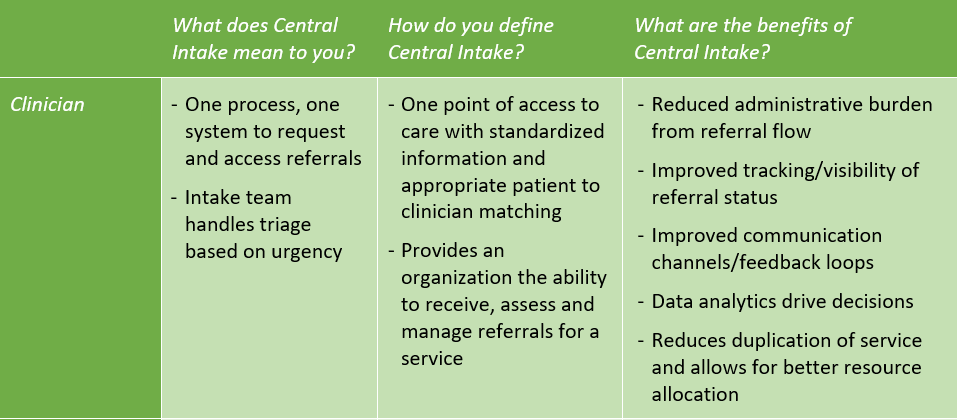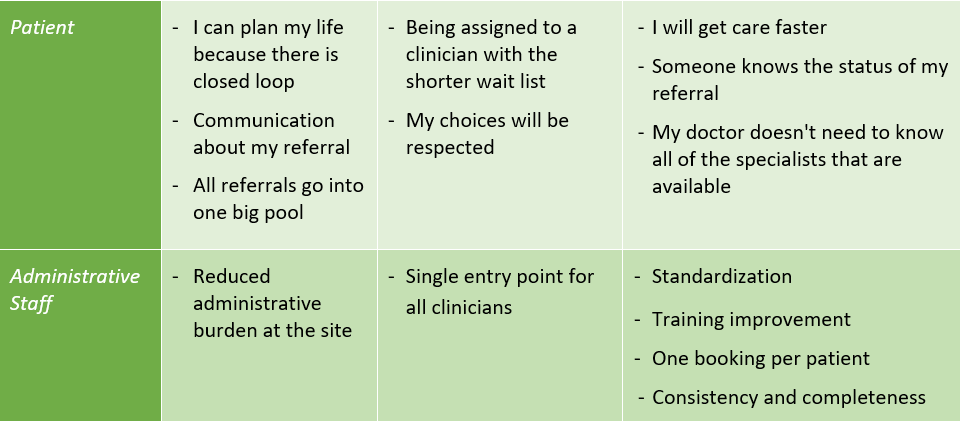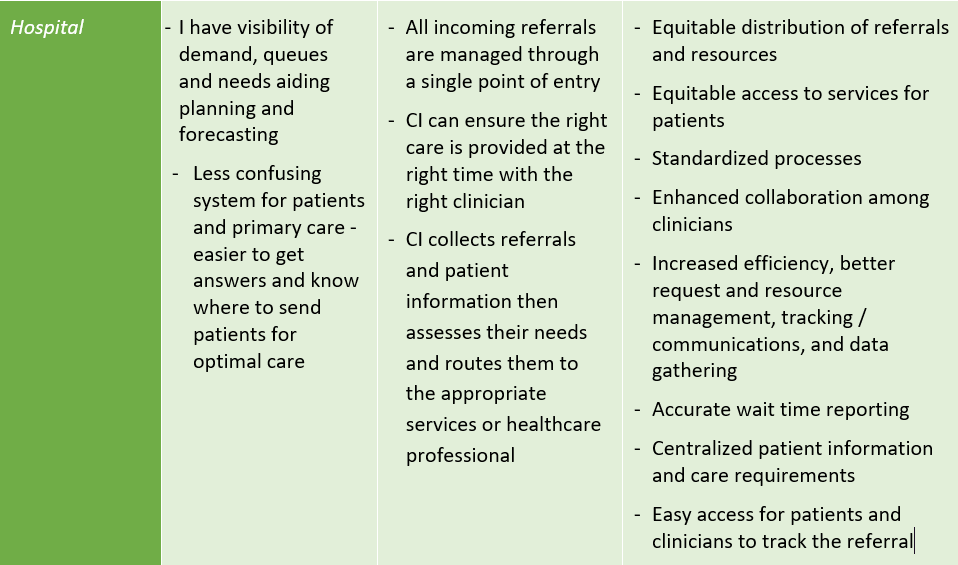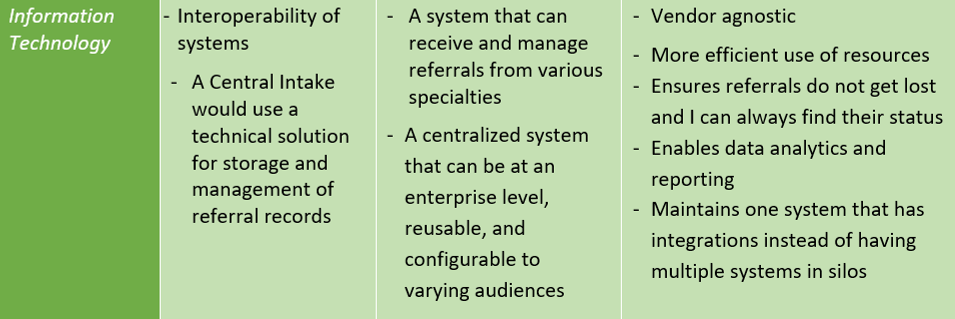eReferral CoP Session #4
On April 10, 2025, the eReferral Community of Practice (CoP) came together to collaboratively discuss Central Intake and share experiences and insights from across the country. This page outlines the group’s discussions.
Central Intake
To set the stage for the discussion, the eReferral CoP members were each assigned a persona (Clinician, Patient, Administrative Staff, Hospital, Information Technology) and asked to answer the following questions:




Central Intake Across Canada
The session included presentations from three jurisdictions (New Brunswick, Alberta and Northern Ontario) outlining their experience with Central Intake. The following are a few key highlights that were echoed throughout the presentations.
- Administrative Central Intakes benefit from access to a clinical resource; there are times when clinical knowledge is necessary to properly route a referral.
- Although a Central Intake can exist in both fax and eReferral environments, an electronic end-to-end solution reduces the amount of manual transcription necessary to complete the process.
- Change Management is a key component of a successful Central Intake implementation.
Central Intake Best Practice Considerations & Principles
A Central Intake framework effectively addresses pervasive bottlenecks by providing structured catchment areas and improving access to care. They streamline patient flow, ensuring efficient and coordinated processes across the healthcare system. Moreover, these frameworks are scalable and sustainable, fostering long-term improvements while delivering a vital solution to streamline healthcare delivery by improving coordination and dismantling siloed systems, ultimately enhancing patient care.
Facilitated Working Sessions with the Task Force
To define the guiding principles, develop key model parameters, functions, outcomes, and resource requirements, collect input on the governance and operation model for the Central Intake model
Data and Document Review
To understand the background of the initiative, as well as collect data to inform the volume and capacity estimates for the model
Environmental Scan
To understand leading practices and models related to intake, assessment, referral, and single points of entry into a health service, i.e., child and youth mental health services
Referral Form Standardization
To support a multi-vendor eReferral network; standard forms for eReferral ensure required patient information is provided, eligibility requirements are met, and that the eReferral is complete and appropriate
Develop a Change Management Framework
To create and sustain buy-in and support for the single-entry point model amongst partner provider agencies
Questions?
Have questions? Complete this submission form and a member of the eReferral CoP will respond as soon as possible. Note: Some questions may require discussion and will be presented at a future quarterly eReferral CoP meeting.
If you are just looking to stay informed on the eReferral CoP meeting topic, an update will be available following each quarterly session.
Get the latest resources and insights
-

Exploring the experience of eReferral users in primary care
The Technology Acceptance Model1 emphasizes that “acceptability” – the perceived ease of use and perceived…
-

eReferral improves the efficiency ofthe MSK referral pathway in Northern Ontario
eReferral enables an efficient Musculoskeletal (MSK) model of care in Northern Ontario including the centralized intake…
-

Registration Now Open: Canada’s Leading Practice Facilitation Program
Our upcoming Practice Facilitation Program, delivered in partnership with Amplify Care and Health Innovation Group,…
-

What does an Integrated Care Manager do?
With a combination of clinical expertise, digital health knowledge, and change management skills, Integrated Care…